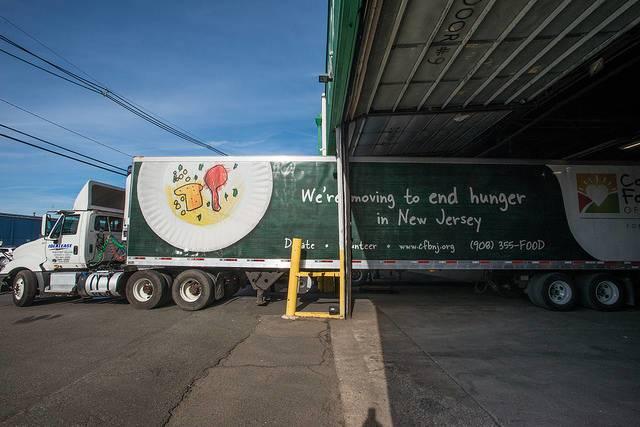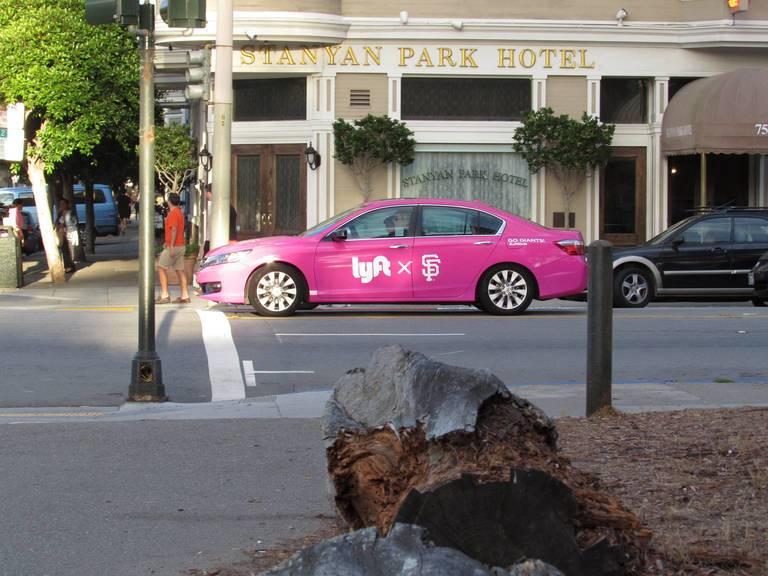Endangered Wildlife Pushed Aside to Start Border Wall Construction


President Trump's promise to build a wall on the US-Mexico border just got a big push from the Department of Homeland Security (DHS).
On Tuesday DHS announced in a press release it would begin constructing a portion of the wall immediately and waive certain environmental requirements "to ensure the expeditious construction of barriers and roads" required for the wall's construction.
The department's decision is based on Section 102 of the 1996 Illegal Immigration Reform and Immigrant Responsibility Act (IIRIRA), which was passed during the George W. Bush era.
The act, which has been amended five times since its passage, charges DHS with the responsibility to "install additional physical barriers and roads (including the removal of obstacles to detection of illegal entrants) in the vicinity of the United States border to deter illegal crossings in areas of high illegal entry into the United States."
Section 102 (b) specifically gives DHS the power to construct "fencing and road improvements in the border are near San Diego California" and outlines the steps and powers DHS has at its disposal. That includes the ability to bypass certain environmental assessments.
According to the act, "[the] provisions of the Endangered Species Act of 1973 and the National Environmental Policy Act of 1969 are waived to the extent the Attorney General determines necessary to ensure expeditious construction of the barriers and roads under this section."
DHS has access to $12 million to complete the improvement without formal application to Congress and the funding " authorized to remain available until expended."
"The sector remains an area of high illegal entry for which there is an immediate need to improve current infrastructure and construct additional border barriers and roads," the department said on Tuesday.
The 15-mile section also cuts a swath through sensitive environmental lands established by US Fish and Wildlife outside of San Diego. Concerns about the environmental impact of the wall has prompted several lawsuits, including one by the Center for Biological Diversity and Rep. Raul Grijalva (D-Ariz.). It's also galvanizing push back from groups concerned about the wider impact of the Trump administration's immigration strategies. The League of Conservation Voters released a statement on Tuesday criticizing the administration's plan for a 700- to 900-mile-long border wall that would traverse several protected wildlife areas.
"If the Trump administration can’t reconcile their xenophobic border wall with dozens of environmental safeguards meant to protect our communities, that’s yet another reason Congress should deny funding," said LCV Vice President of Government Affairs Sarah Chieffo.
But in this case, it's unclear whether Congress could pull the funding from DHS, since the law gives it the ability to waive environmental assessments as well as designated funds to complete the task.
"Laws like the National Environmental Policy Act, the Endangered Species Act, the Solid Waste Disposal Act, and the Clean Water Act keep our families healthy. But driven by an anti-immigrant agenda, the Trump administration is callously putting construction of an environmentally and culturally destructive wall above water resources for communities on both sides of the border, federally protected lands, clean air, and the lives of hundreds of endangered species – all while turning a blind eye to the vital relationships of cross-border communities and our longstanding values as a nation," said Chieffo.
For its part, DHS states that it still intends to do its part to ensure environmental impact is minimized in all areas of construction.
"While the waiver eliminates DHS’s obligation to comply with various laws with respect to covered projects, the Department remains committed to environmental stewardship with respect to these projects. DHS has been coordinating and consulting -- and intends to continue doing so -- with other federal and state resource agencies to ensure impacts to the environment, wildlife, and cultural and historic artifacts are analyzed and minimized, to the extent possible."
One thing that is still unclear is the extent of the Trump administration's powers to use the IIRIRA to install sections of the border wall on a repeated basis. Can it become the fail-safe option for Trump's wall if Congress fails to come up with adequate funding on a "quick" basis?
While the latest House spending bill (passed last week) does allocate $1.6 billion of funding for the border wall, it's expected to encounter trouble in the Senate. Senate Democrats are expected to block its passage. Some Republicans may also refuse to endorse it since the total budget exceeds Department of Defense spending by more than $63.5 billion. With the clock ticking, the Trump administration may feel that it can at least implement part of the wall using a law that was at the time, expected to fortify borders against terrorists.
The 1996 IIRIRA also gives DHS other powers as well: the ability to negotiate with landowners to acquire land for the border wall and if necessary, to "commence condemnation proceedings." Environmental protections therefore, aren't the only issue hanging in the balance of a campaign promise that according to polls, most American voters now oppose.
Flickr images: Tony Webster; Allen Ormond; Jonathan McIntosh
When Death Calls, CSR Takes Center Stage


By Anna Johansson
At the heart of CSR is the notion that corporations have an obligation to society and stakeholders that goes far beyond generating revenue. Therefore, CSR can include anything that seeks out social betterment. In the wake of the death of a stakeholder, how an organization responds can have a major impact on how the firm is viewed both internally and externally. Does your organization have a plan for how to deal with the tragic death of an employee?
How to handle death in the context of your CSR strategy
While the death of an employee can be a logistical challenge from a business perspective, the complexities of ensuring continuity and finding a replacement take a backseat to the emotional aspects related to consoling family members and helping coworkers grieve properly. In certain situations, there’s also the need to make a public statement and deal with the press.
How you handle the death of an employee will say a lot about your organization and how you care for your stakeholders. Let’s analyze a few suggestions and best practices.
1. Make contact with the family
One of the hardest things you’ll ever have to do in your life is make contact with a spouse, parent, or child after their loved one has passed away. It’s gut wrenching, but something that has to be done when you represent your organization.
While you probably shouldn’t reach out to family members in the immediate hours after the death, it’s a good idea to do it sooner rather than later. The time frame of 24 to 36 hours after the employee’s passing is usually ideal. This gives them some time to gather themselves, but isn’t so delayed that it seems like you don’t care.
When you make contact with the family, be sure to speak personally, as well as on behalf of the company. Be sure that they know the organization is there for them in their time of need.
2. Consider the announcement
The next step is to consider how you’ll announce the death. Every situation is unique and how you handle this aspect will be determined by the role of the employee and your brand’s standing in the industry.
If the individual is a key stakeholder – such as a manager or executive – and your brand is well-known in the marketplace, an official public statement is probably appropriate. Check out some of the statements Apple released in the wake of Steve Jobs’ passing to see what this looks like.
If the individual isn’t a public figure and your business is small and relatively unknown outside of the industry, an internal announcement will suffice. However, do make sure you follow the wishes of the family if they specify preferences.
3. Offer support for employees
Employees also need to be supported following a coworker’s death. If it happens in the middle of a workday, consider letting those close to the individual go home. If that’s not possible, providing some time for coworkers to gather together and console one another is definitely a good idea.
In the weeks after the death, your company should offer optional counseling and support to help them confront their emotions and deal with fear, anxiety, depression, sadness, or anything else they’re dealing with.
Some employees will take longer to recover than others. You don’t want to rush people back into action or you’ll seem insensitive. Put your employees first and remember that their emotional health ultimately contributes to the company’s financial health.
4. Properly remember the deceased
How you handle the memory of the deceased employee in the weeks, months, and years after the death will, to a large degree, impact how those inside and outside of the company view your organization’s CSR commitment.
Whether the deceased individual worked in the mailroom or had a corner office in the C-suite, you need to do something. This could be as simple as naming a star after the person, or as involved as starting a foundation in their name.
Putting it all together
The triple bottom line is about people, planet, and profit – in that order. Often times, we get things backward and put profit first. Ideally, it doesn’t take a tragedy to realign your focus and put your CSR strategy back on track.
The death of an employee is never easy. From a human perspective, you owe it to your other employees and the family of the deceased to send your condolences and offer emotional support in their time of need. From a business perspective, you have an obligation to all of your stakeholders to slow down and put people over profits.
Walmart steps up certification of responsible sourcing of seafood


Sustainable investments deliver higher returns in UK


Sustainable investments deliver higher returns in UK


‘Action Research’ method trains business leaders to make impact


The challenges facing us – population growth, migration, globalisation, shifting centres of economic power, increasing inequality of life and the deterioration of the environment – are pressing. Now, many advocates for change have realised that change and innovation is predominantly a socio-technological phenomenon and that the standard approaches no longer work.
So perhaps it is time for a more radical approach to the dynamics of stability and change? Leaders should take a look at themselves, as well as their organisations, when they are asking how we do good business as a global community.
The Executive Doctorate in Organisational Change at Ashridge Executive Education, at Hult International Business School, is not for the faint-hearted. Through the discipline of ‘Action Research’, it throws students – be they CEOs, managers, entrepreneurs or individuals – into the lions’ den and pushes them to research themselves as much as their corporation or organisation.
“As a business school we’re obviously rooted in business, but at the same time we’re challenging business,” says Dr Steve Marshall, Academic Director. “We are deliberately radical and we are looking for people who want to change their organisations – be it a church or charity, a hospital or a multinational – for the better. What really interests us is how the individual, the researcher, can bring about change in existing social systems.
“We rate our students on the impact they have, not the number of times someone reads their research,” he says.
The key buzzwords here are research with, not research on, Marshall explains. ‘Traditional research, the ‘Expert Model’, involves coming up with a hypothesis, working out the methodology and going into the field. Researchers will go into an organisation, for example, study its practices, conduct focus groups, opinion polls or surveys, and come up with a diagnosis. The researchers keep control of the research while the participants are held at a distance. The researchers reach the conclusions.’
The Ashridge method, ‘Action Research’, is a three-pronged personal approach based on First Person, Second Person, Third Person. “First, we look at ourselves as researchers, understand our interest and motives in this research, how we are seeing the problem and why?” says Marshall. “Our concept is that first the researcher must know themself before going on to work with others.
“Secondly, in the ‘second person’ part, we explain our ideas to the participants and get their feedback on the research and our methods so that they share the issues and the research is as participatory as possible. If researchers simply fire questions, it is another case of the subjects being told what to do and you are far less likely to achieve anything of consequence. If, on the other hand, we convene the community and ask: what’s the best way to get this knowledge? and we join with the participants as co-researchers and co-inquirers, they will be more likely to speak up and the results will be more valuable,” he continues.
“And ‘third person’ means we take our research out into the world and make sure it has impact. While the doctorate is academic, this is nevertheless research for positive change – rather than research for publishing in some arcane journal and adding only to our theoretical knowledge.”
“In the thesis,” says Marshall, “we are looking for the impact of the individual, at how they have convened a conversation in a different way so as to make a difference and change an organisation.
“It is so easy for individuals to think “but what can I do? How can I make a difference?” and feel deflated, but individuals can make an impact, Marshall insists.”
He quotes the example of a doctoral student who had two very sick children whom she felt were being treated as ‘numbers’ by an overstretched NHS. She began to examine how this depersonalisation could be avoided in a large medical organisation. “She invited other parents, doctors and nurses to a group discussion to co-inquire and today she is addressing large audiences on the same issue.”
Another difference from conventional research is that the research question can often change during the research as students examine their own roles as researchers. For example, a senior policeman inquiring into better leadership in the police force discovered that there was a gender issue that prevented this happening. “The topic of the research changed,” says Marshall, “and the methods and questions shifted as we went along.
“Our aim is not to prove or disprove a hypothesis that is set in stone at the beginning.”
Action Research has its beginnings as far back as the end of the Second World War with the emancipatory philosophies that started to look at what makes a worthwhile organisation, says Marshall. Today, as social responsibility and sustainability are coming to the fore in the corporate agenda, as well as new concepts of civil society, an increasing number of people are realising that the conventional change models are not working. They want to know: what do we do now for the greater collective good; how do we do good business?
“We, at Ashridge, see ourselves as consultants for change. Our role is not to oppose business but to challenge it and we believe that helping to develop individuals and training people to go out and change the world is the most important work we can do.
“Many people reach the stage when they question what they want to do with their life, and how they can meaningfully contribute to the good of the global community,” says Marshall, “and this doctorate is precisely for those who want to initiate and sustain change within their organisations. It is aimed at those who want to make a unique contribution in their chosen field.”
The Ashridge doctorate programme challenges participants’ implicit and explicit assumptions and the implications of those assumptions for their practice. Students undertake this research in collaboration with like-minded peers and the support of like-minded tutors.
It is, warns Marshall, a radical doctorate. “Getting people to speak out, break the rules, be creative and challenge hierarchies can have consequences. When we get students to subject themselves, as well as their organisations, to research, to challenge their own motives and practices, they can change in ways that are shocking even to themselves.
“This is a very developmental program and this, in itself, carries risks and can put students in a vulnerable position. We, as a faculty, are very aware that our role is as much in supporting students as in challenging them.
“Some will end up changing their own roles – even their whole lifestyles – quite significantly.”
$1 Million Per Job?! Funny Money in Wisconsin Foxconn Deal


After a three-and-a-half year odyssey during which Apple’s largest manufacturing partner, Foxconn, has dangled the tantalizing prospects of manufacturing jobs and American-made products in front of citizens and politicians, the Taiwanese-based company settled on Wisconsin for a future $10 billion flat-panel factory.
The announcement, made last week at the White House, was a victory for President Trump and Speaker of the House Paul Ryan, who have struggled passing their agenda despite the GOP’s control over two branches of the federal government. This was also a win for past presidential contender Governor Scott Walker, whose promise to create 250,000 jobs during this term in the Badger State has in part made his re-election next year far from certain.
“This is a great day for American workers and manufacturing, and for everyone who believes in the concept and the label, ‘Made in the USA,’” said the president at the East Room ceremony showcasing the deal.
But it has not taken long for critics of the deal to crunch the numbers and question whether the amount of taxpayers’ money to be spent on luring Foxconn to Wisconsin is really a wise investment, or a windfall for a foreign-based company. Environmental groups have also objected to the subsidies package as it includes exemptions from certain regulations.
Foxconn has said it will invest as much as $10 billion in the factory, but most sources have estimated that Walker will put Wisconsin’s state government on the hook for $3 billion. That is about $1 million the state will pay for each new Foxconn job, the salaries of which will average $54,000 annually. Wisconsin’s state economic development agency claims the construction of Foxconn’s new facility will generate 10,000 construction jobs over the next four years along with 6,000 indirect jobs. Analysts at the agency project the Foxconn factory could have at least a $7 billion annual economic impact on the state.
Not so fast, said Tim Culpan of Bloomberg.
“Politicians, lobbyists and Foxconn can make the figures work by being generous with the facts,” wrote Culpan shortly after the deal was announced. “For example, if every one of those jobs came to fruition, they can claim 29,000 positions for $3 billion, or $103,000 per job. But that's not going to happen.”
Culpan argued that even if Foxconn follows through and invests that promised $10 billion in the plant, that will amount to more capital investment than the company spent over the previous five years combined. If Foxconn really wants that return on investment, the only option for this factory to make any financial sense is to rely on automation. The other option is to have the plant heavily staffed. But the factory will not experience both.
“This package could buy an iPhone for everybody in the state,” sniffed Culpan in summarizing the deal.
The deal poses a huge risk for Wisconsin, as one local paper estimated that the subsidy the state is willing to give Foxconn is 50 times larger than any package previously given to a company.
Some Wisconsin politicians have questioned whether spending anywhere from $300,000 to $1,000,000 per job makes the Foxconn deal worthwhile. ““Wisconsin taxpayers should not be subsidizing private corporations at the expense of our children, schools, and roads,” State Representative Jimmy Anderson said during an interview with a local radio station.
As several news reports have also pointed out, Foxconn has a record of announcing impressive-sounding statements for U.S. factories that never materialized. In 2013, the company said it would open a factory in Pennsylvania that would hire 500 workers. But the buzz subsided, Foxconn never opened such a factory. Similar promises also fell through in Brazil, Vietnam, Indonesia and India.
The Trump administration needs this deal to pan out, however, especially after another chaotic week that resulted in the president lagging even further down in the polls.
While Trump was quick to boast about Foxconn’s Wisconsin deal despite a lack of direct involvement, another company has already broken a pact it supposedly made with the Trump administration.
Carrier has begun layoffs at an Indianapolis factory the president claimed he persuaded to stay open. Over 600 workers will start losing their jobs this month, but so far Trump has not commented on Carrier’s about-face.
Image credit: InWisconsin.com
New Jersey to Slash Food Waste to Reduce Emissions, Fight Hunger


Estimates have long suggested that as much as 40 percent of food in the U.S. is lost and wasted somewhere between farm and fork. Plenty of fingers have been pointed towards various causes, and countless waste diversion solutions such as composting or revamping expiration dates have been offered from all directions.
Nevertheless, the fact remains more communities are struggling to find places to entomb municipal waste. The problem has become acute in New Jersey, where more and more garbage over the years has been sent to landfills out of state.
Last week, the state’s legislature passed, and Governor Chris Christie signed into law, Senate Bill 3027, which established a statewide food waste reduction goal of 50 percent by 2030.
Critics of wealthy countries’ penchant for wasting food have long pointed out the environmental impacts, such as the release of methane gas, that increase climate-change related risks. The Environmental Protection Agency has concluded that more food ends up deposited in landfills or burned in incinerators than any other form of waste – 21 percent according to its most recent estimate.
But New Jersey’s law also notes that if more food is saved, fewer people go hungry. The United Nations’ Food and Agriculture Organization (FAO) has suggested that if one-fourth of the food currently lost was saved, that amount would be enough to feed 870 million people worldwide.
How the Garden State will actually achieve that goal is an open question. The law requires the state’s environmental agency to develop a plan within the next year that will outline the steps needed to reach that 50 percent mark.
New Jersey has other bills waiting in the legislature’s hopper that will help S.B. 3027 become reality, but as of press time they have not become law. One bill requires “large food waste generators,” such as supermarkets, restaurants, resorts or casinos to separate food from their waste streams and either find a way to recycle or compost it; a similar bill would mandate that such food waste be churned into energy. Other legislation on the books would make it easier for municipalities to adopt local regulations covering the storage and disposal of food waste. Schools could also be required to become more assertive in how they cope with those discarded lunches.
The bill’s sponsors in New Jersey have expressed hope that their state can become a nationwide model for finding innovative ways to reduce and even eliminate food waste. But the fight against food waste has many moving parts.
One problem is liability – many states have laws on the books that obstruct well-meaning organizations from distributing donated or past-date food products to those who need it. A Harvard University study has implored states to provide liability protection to food donors and food recovery non-profits in order to feed the hungry while reducing food waste. The same study has also suggested that tax incentives include the costs associated with transporting food – and also offer credits when food is sold at a steep discount, instead of only when it is given away for free.
Image credit: USDA/Flickr
Toyota Pursues Futuristic "Hydrogen Society" Model for Decarbonization


Auto industry observers have been skeptical of hydrogen fuel cell electric vehicles, but Toyota has been pushing forward with marketing plans for its Mirai fuel cell EV. Now it appears that the company is doubling down. On July 31, the Toyota Mobility Foundation announced that work is starting on a research project aimed at building entire hydrogen-powered communities including vehicles, buildings and other elements.
No, the hydrogen honeymoon is not over. In fact, it's just getting started.
The Toyota Hydrogen Society
For those of you new to the topic, hydrogen is an abundant fuel but it does not occur naturally in a usable state. Currently the main source is natural gas, though water-splitting and biogas conversion are coming into wider use.
Eliminating natural gas and other fossil sources from the supply chain is a necessary first step for a sustainable, low carbon economy.
Toyota has already begun testing the feasibility of carbon neutral communities with a wind powered water-splitting pilot project in two cities in Japan.
The Toyota Mobility Foundation (TMF) research project takes it up to the next level. Toyota describes the concept as a "set of communities with sophisticated, integrated, green-energy networks powered by mini-hydrogen plants that aim to create a carbon-free, hydrogen distribution system."
The five-year research project is aimed at funding technologies that reduce the cost of hydrogen-based systems throughout the supply chain:
...TMF will emphasize innovations in the generation, storage, transportation, and use of hydrogen when screening the submitted proposals...The Toyota Mobility Foundation seeks projects that demonstrate progress in reducing carbon dioxide emissions and lowering the cost of hydrogen by 2030.
Interestingly, TMF states that it will focus on enlisting young participants, "in an effort to maintain longevity." As of this writing the TMF website does not elaborate on this point, but it seems likely that the company seeking to invest in independent researchers who are willing to adapt to Toyota's corporate culture and make the project their life's work, rather than hopping off to the next grant.
A six-year study of the company released in 2008 bears this plan out. The authors were looking for evidence that Toyota's much talked-about "Toyota Production System" accounted for the bulk of its success. They found, however, that the company's corporate culture plays an equally important role:
The company succeeds, we believe, because it creates contradictions and paradoxes in many aspects of organizational life. Employees have to operate in a culture where they constantly grapple with challenges and problems and must come up with fresh ideas. That’s why Toyota constantly gets better.
But the fueling stations...!
Critics of fuel cell electric vehicles are quick to point out that fueling stations are few and far between. That same issue bedeviled the battery EV market until the technology matured and costs came down.
Toyota has already partnered with other Japanese auto manufacturers to accelerate the development of a robust fueling station network throughout Japan, as reported by Forbes last spring:
Powered by funds supplied by the Development Bank of Japan, all three major Japanese automakers, Toyota, Nissan and Honda, have banded together with major Japanese gas and energy suppliers to build a network of hydrogen fueling stations big enough to support their government’s ambitious 2020 target of 40,000 hydrogen fuel cell vehicles on Japan’s roads.
That's a pretty tall order. The country's existing roster of stations tops out at 90, and plans are in the works for at least 70 more by 2020.
According to Forbes, other sources put target at 300 within the next 10 years, and 900 by 2030.
Here in the U.S., California is among a handful of states working aggressively to develop fuel station networks, and the Department of Energy is still funding cutting edge research aimed at bringing down the cost of fuel cell passenger cars and other light duty vehicles.
When the revolution comes, it will be driving a forklift
In addition to the fuel station issue, costs are still high for fuel cell EVs. They have been struggling to edge into the consumer market, facing competition from both conventional vehicles and fresh waves of battery powered EVs.
There is a spark of hope, though. TriplePundit has previously noted that the growing market for fuel cell forklifts could help motivate continued investment in fuel cell R&D.
Bloomberg, for one, agrees. A July 31 article bears the headline "Amazon and Walmart Finally Give Hydrogen Power a Reason to Be," with this observation:
Now, thanks to the thriving warehouse networks of online and big-box retailers, hydrogen has found a place inside growing fleets of forklifts.
Fuel cells are also finding their way into other sectors where long range and quick refueling are assets, including long distance trucks and delivery trucks.
The fuel cell society of the future
In a community that runs on fuel cells, vehicles are only part of an integrated network that includes stationary fuel cells, potentially one in each building.
Building and managing such a community is a sophisticated task, and Toyota is laying the groundwork for that with another funding program announced earlier this summer.
This program is a new $100 million "disruptive technology" venture capital fund under the newly launched Toyota AI Ventures, a subsidiary of the Toyota Research Institute.
The areas of focus are artificial Intelligence, robotics, autonomous mobility, and data and cloud technology.
Start-ups that AI Ventures invests in will receive mentoring and support at the Research Institute's headquarters in California, so it looks like despite the naysayers among U.S. auto industry observers, Toyota's futuristic fuel cell societies could sprout up on these shores sooner rather than later.
If and when fuel cell EV sales really begin to take off, Toyota is hedging its bets on EV technology. The company recently announced that in about five years it will begin sales of an all-new EV that runs on cutting edge solid state batteries.
Photo (cropped): 2017 Mirai via Toyota.
What is the Value of the Sharing Economy? The Case of Lyft


A couple of weeks ago I gave a Masterclass on designing resilient organizations at the OuiShare Fest in Paris. After the class I sat down for lunch with two students attending the festival and told them about my interest in the sharing economy and the love/hate relationship I have with this trend. We were almost done with the lunch when one of them asked me:
So, really, what is the value of the sharing economy?
I gave her an answer, but the question kept bugging me, and I decided it deserves more contemplation as it is at the core of an ongoing debate on the future of the sharing economy and its impact on the economy and society. To answer it, I want first to focus on three questions:
- What value are we talking about?
- Value to whom?
- Where – are we taking into consideration any spatial boundaries?
To the first question I would answer that we need define value using a holistic perspective that is more systematic in nature and is aligned with the three dimensions of sustainability (economic, ecological and social). Therefore, we shouldn’t look just at the economic value that sharing economy platforms generate, but at multiple forms of value creation – economic, social and ecological.
The next consideration is, who is benefitting from value creation via sharing economy platforms? In this case, since we look at value creation through sustainability lens, we will also move beyond the shareholders and the customers to consider key stakeholders in sharing economy platforms, including society and the environment. This approach as Nancy Bocken et al. explain is more network-centric than firm-centric to value creation, as it considers “all actors involved in the design, production and distribution of a product or service.”
Finally, there’s the question of spatial boundaries. Here I’d like to suggest an urban context, looking at the value of sharing economy platforms in cities where they operate. I do so because sharing economy services are mainly offered “in and around urban population centers,” and due to the fact that “we are living in the century of cities.” As the Rockefeller Foundation’s 100 Resilient Cities’ points out in their report ‘Cities Taking Action’, “as important political centers, and magnets for both our world’s richest and our most in need, cities stand at the forefront of the challenges and opportunities of the 21st century.”
Thus, the question narrows: What economic, social and ecological value do sharing economy platforms create for their key stakeholders in the cities where these platforms operate?
The "sharing economy" is broad umbrella term referring to many services, but this framework can be used to answer the question for every sharing economy platform. Here's an example from one of the main sharing economy categories – transportation.
To make this user-friendly, I will present my proposition in two parts: Today, in the first part I’ll review a tool that will help us evaluate the multiple types of value created by a sharing economy platform to multiple stakeholders. In the second part I will look at the relationships between sharing economy platforms and the cities where they operate, and offer a way to assess the value created by sharing economy platforms in cities.
The tool I’d like to introduce today is the value mapping tool, which as Bocken, Rana and Short explain is “an approach for ideation and analysis for sustainable business model innovation involving mapping the value captured, missed and destroyed and new opportunities for a range of stakeholders.” Stakeholders also include society and the environment to ensure all the impacts of the business are taken into consideration.
We’re using this tool here as it provides a systemic approach to value creation and business modeling, not only taking the multi-stakeholder approach, but also exploring forms of value so we can see both the positive and negative value a business creates. As you can see in the figure below the tool includes the following forms of value:
Value captured: Positive benefits delivered to stakeholders (current value proposition)
Value destroyed: Negative outcomes of the current business model
Value missed: Value currently squandered, wasted or inadequately captured by current model
Value opportunity: New opportunities to resolve value missed and destroyed for stakeholders
Value mapping tool. Source: Bocken, N., Short, S., Rana, P., Evans, S., 2013. A value mapping tool for sustainable business modelling. Corp. Gov. 13 (5), 482–497.
The sharing economy platform we’ll be using as an example is Lyft, the ride-hailing company which operates in more than 350 cities in the U.S. Lyft is an interesting example as it “cultivated a good guy image” and has positioned itself as an ethical alternative to Uber, although technically their business model is not that different –they’re both app-based, on-demand for-profit ride services, matching supply and demand. This tension between Lyft’s for-profit structure and its aspiration to develop a human-centered culture and business generates complexity that can be useful for our investigation.
In this case we will look only at the value captured and destroyed by Lyft, as we are interested at this stage to provide a generate ideas on how Lyft can become more sustainable, but in a snapshot of the value Lyft currently creates (in the second part of this piece we will be adding the two other parts in the tool – missed value and value opportunities).
The value mapping process, as Bocken, Rana and Short propose, starts by clarifying the purpose of the business: Why is the business here in the first place?
Lyft makes the case on its blog that it “was founded on the belief that technology will enable us to dramatically reduce carbon emissions from the transportation system while improving quality of life and access to opportunity for all Americans.” In another blog post the company claims: “At Lyft, our mission is to improve people’s lives with the world’s best transportation. We see the future as one where car ownership is optional, cities are designed for people instead of cars, traffic disappears, and every seat in every car is filled.”
As I understand it Lyft’s purpose is to use technology to recreate a transportation system that works better for people and the environment (I’m cautious not to say anything about ‘making the world a better place’).
Now, let’s look at the value created by Lyft for multiple stakeholders:
1 http://www.wgrz.com/news/ridesharing-vs-taxi-cost-comparison/453134550
2 http://therideshareguy.com/rsg-2017-survey-results-driver-earnings-satisfaction-and-demographics/
3 https://medium.com/@johnzimmer/the-third-transportation-revolution-27860f05fa91
4 https://www.bloomberg.com/news/articles/2017-04-27/lyft-bookings-and-ridership-soar-while-losses-shrink
5 https://www.glassdoor.com/Overview/Working-at-Lyft-EI_IE700614.11,15.htm
6 https://www.theguardian.com/technology/2017/mar/29/is-lyft-really-the-woke-alternative-to-uber
7 http://www.latimes.com/politics/washington/la-na-trailguide-updates-lyft-pledges-to-donate-1-million-to-1485713226-htmlstory.html
8 https://www.lyft.com/round-up/causes
9 http://www.bc.edu/content/dam/files/schools/cas_sites/sociology/pdf/SocCompass Sharing Economy v3.pdf
10 http://www.newyorker.com/culture/jia-tolentino/the-gig-economy-celebrates-working-yourself-to-death
11 https://www.citylab.com/transportation/2017/02/uber-lyft-transportation-network-companies-effect-on-transit-ridership-new-york-city/517932/
12 https://www.washingtonpost.com/news/wonk/wp/2016/01/14/what-silicon-valley-doesnt-understand-about-inequality/?utm_term=.b559b22a5394
13 https://blog.lyft.com/posts/2017/6/14/lyft-climate-impact-goals
14 http://fortune.com/2017/05/26/uber-lyft-people-ditching-cars/
15 https://www.theguardian.com/environment/2016/jan/21/uber-lyft-helping-hurting-environment-climate-change
16 http://time.com/4476614/self-driving-cars-environment/
* At the same time, about 75 percent of Lyft drivers are satisfied with their Lyft driving experience, according to The Rideshare Guy’s survey (compared to just 49.4 percent on Uber).
From the table above we can see a number of bright spots in terms of creating multiple types of value (economic value to customers and to some degree to drivers, promoting a progressive agenda and committing to climate change goals), but also numerous dark spots (employing drivers as independent contractors with few benefits, contributing to the unsustainable ‘gig economy’ culture). There are also some unknowns like Lyft’s impact on the environment and public transportation (as was seen last month in the debate over its latest service – Lyft Shuttle).
As Bocken, Rana and Short point out, the value mapping tool “is largely qualitative in nature and does not allow for detailed quantitative analysis.” While it allows us to evaluate Lyft’s range of impacts, it may be difficult to generate value judgment based only on this evaluation – is Lyft a force for good as the company claims to be or just another example of platform capitalism, exploiting labor to enrich venture capital?
This question is coming up time and again in different situations - a couple of weeks ago Lyft started testing a new service in two cities called Shuttle, providing customers with “ride for a low fixed fare along convenient routes, with no surprise stops.” The resemblance to a bus service created immediately debate on what the value of this service – is it a convenient bus service to the well-off that may lead to “a two-tiered transit system inherently hurts more vulnerable riders and leads to a cycle of disinvestment in mass transit solutions,” or a much-needed way to support public transit, with a service that is “designed to do things buses can’t do and reach people buses don’t reach, helping attract a broad spectrum of riders who haven’t used transit before” as Lyft’s Emily Castor explains.
To provide further clarity we need to add another framework that, in conjunction with the value mapping tool, better demonstrates the value of Lyft and can be applied to any sharing economy platform. We need a way to contextualize the impacts mapped by the tool. So what is it? To learn more about it you will need to wait (but not too long I promise) for part 2!
Image credit: IG: cb2017_